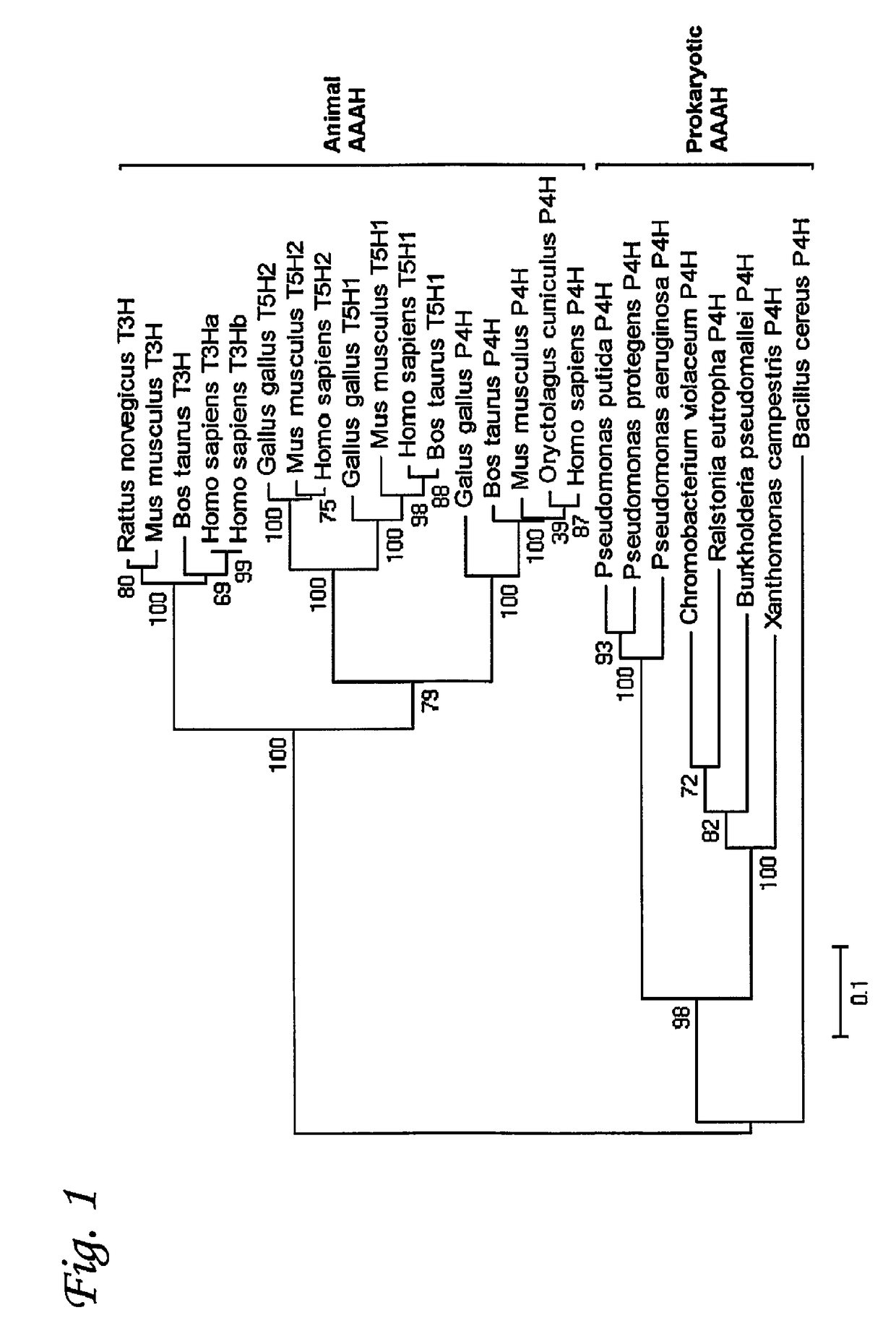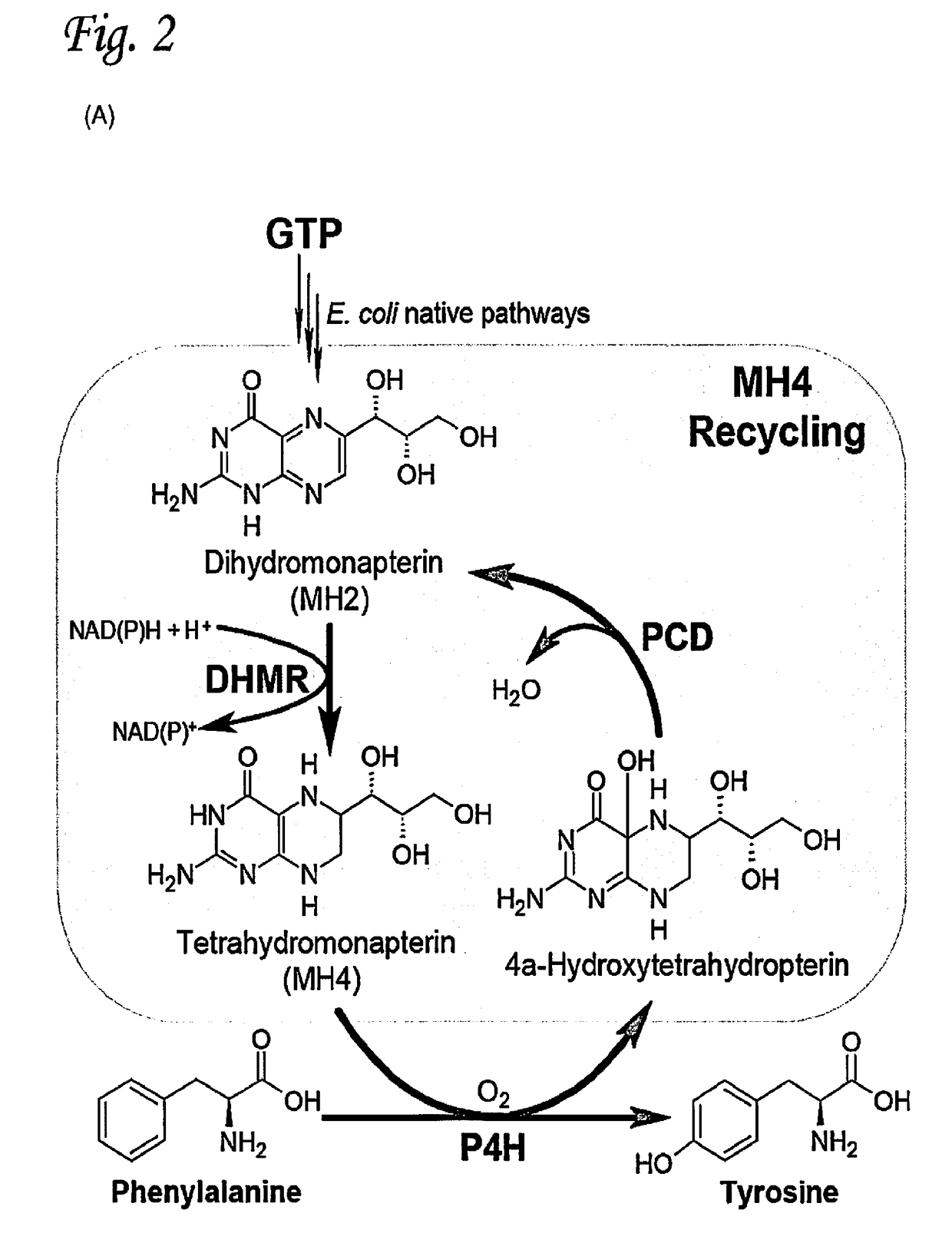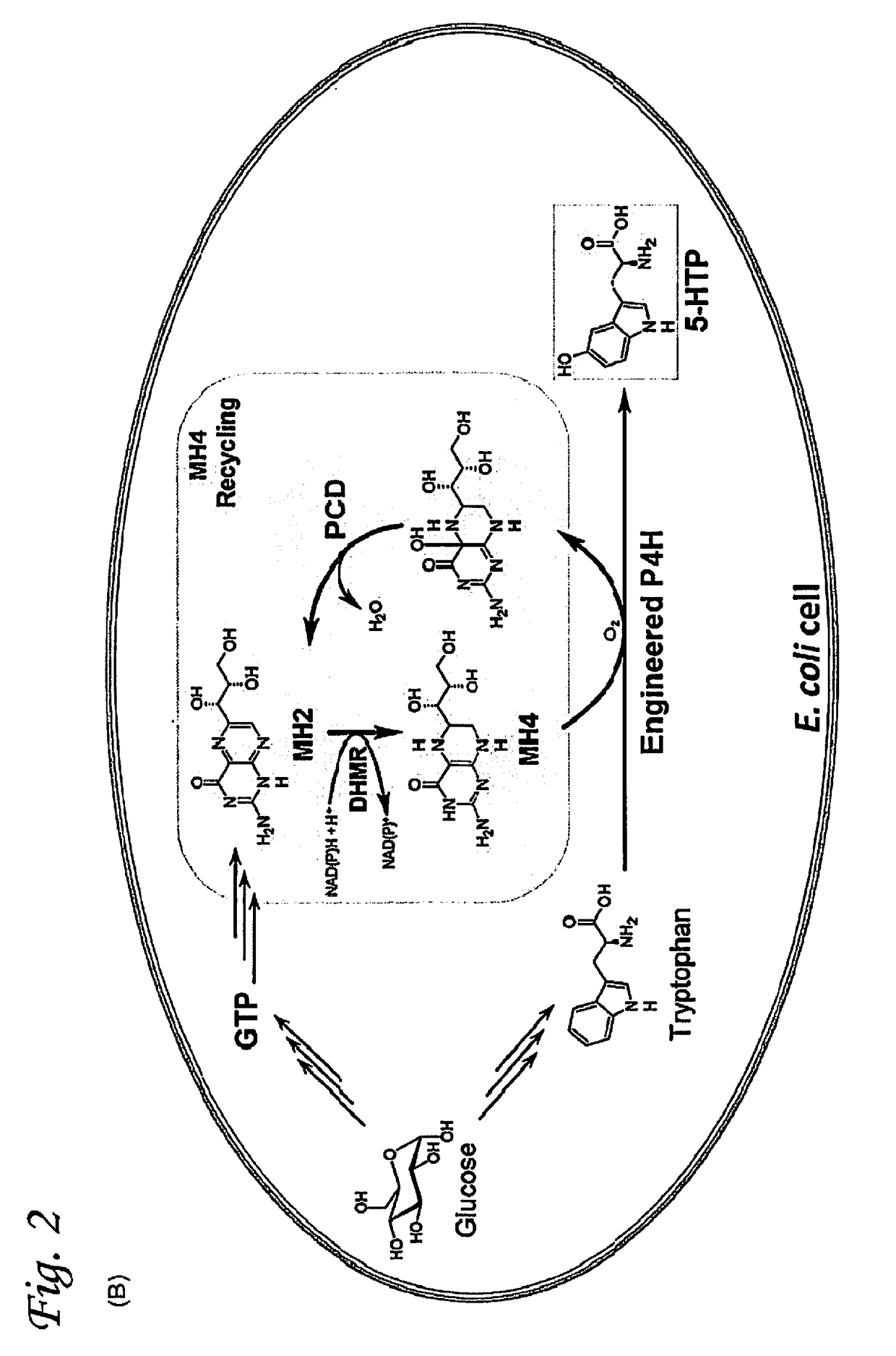Microbial approach for the production of 5-hydroxytryptophan
a technology of 5-hydroxytryptophan and microorganisms, which is applied in the direction of lyase, enzymology, carbon-oxygen lyase, etc., can solve the problems of limited cost-effective production and broad clinical applications of 5-hydroxytryptophan, and the market value of end products is much higher, so as to improve the titer of 5-hydroxytryptophan and permit low-cost, large-scale production
- Summary
- Abstract
- Description
- Claims
- Application Information
AI Technical Summary
Benefits of technology
Problems solved by technology
Method used
Image
Examples
example i
ng Bacterial Phenylalanine 4-Hydroxylase for Microbial Synthesis of Human Neurotransmitter Precursor 5-Hydroxytryptophan
[0059]5-Hydroxytryptophan (5-HTP) is a clinically effective drug against depression, insomnia, obesity, cerebellar ataxia, chronic headaches, etc. It is only commercially produced by the extraction from the seeds of Griffonia simplicifolia due to lack of synthetic methods. Here, we report the efficient microbial production of 5-HTP via combinatorial protein and metabolic engineering approaches. Instead of using the less tractable animal tryptophan 5-hydroxylase, we attempted to modify a bacterial phenylalanine 4-hydroxylase (P4H) to alter its substrate specificity. First we reconstituted and screened prokaryotic phenylalanine 4-hydroxylase (P4H) activity in Escherichia coli. Then, we used sequence and structure-based protein engineering to dramatically shift its substrate preference, allowing for efficient conversion of tryptophan into 5-HTP. Importantly, E. coli e...
example ii.5
Example II. 5-Hydroxytryptophan as an Animal Feed Supplement
[0136]Milk fever (also called periparturient hypocalcemia) is a metabolic disorder frequently occurring among farm animals around calving period. About 0-10% of dairy cows experience milk fever (clinical hypocalcaemia), while this number can increase to 25% in calving cows (DeGaris et al. 2008, Vet. J. 176, 58-69). Moreover, a majority of dairy cows exhibit different degrees of subclinical hypocalcaemia. Milk fever results in substantial economic losses to dairy farmers, including cow deaths (about 5% of affected cows), reduction in the productive lifespan (3.4 years for each affected cow), decrease in milk production, deterioration in reproductive performance, and costs on prevention and treatment of this disease. On average, the total loss related to milk fever is estimated to be $334 per incidence (Goff et al., 2003, Acta Vet. Scand. Suppl. 97, 145-147). The Food and Agriculture Organization of the United Nations (FAO) h...
PUM
| Property | Measurement | Unit |
|---|---|---|
| temperature | aaaaa | aaaaa |
| temperature | aaaaa | aaaaa |
| temperature | aaaaa | aaaaa |
Abstract
Description
Claims
Application Information
 Login to View More
Login to View More - R&D
- Intellectual Property
- Life Sciences
- Materials
- Tech Scout
- Unparalleled Data Quality
- Higher Quality Content
- 60% Fewer Hallucinations
Browse by: Latest US Patents, China's latest patents, Technical Efficacy Thesaurus, Application Domain, Technology Topic, Popular Technical Reports.
© 2025 PatSnap. All rights reserved.Legal|Privacy policy|Modern Slavery Act Transparency Statement|Sitemap|About US| Contact US: help@patsnap.com



